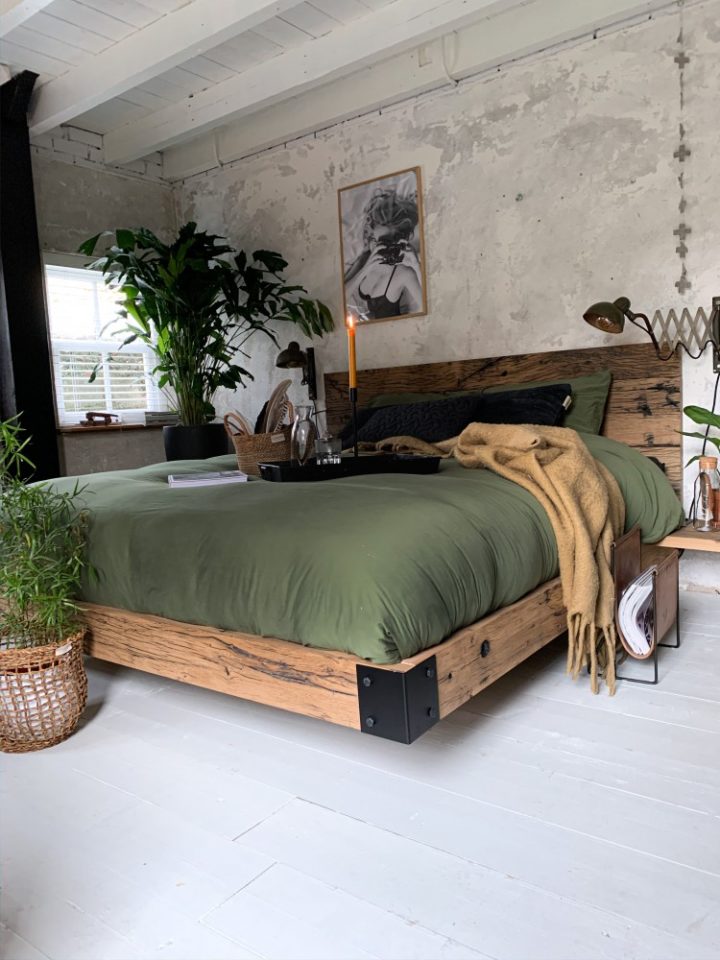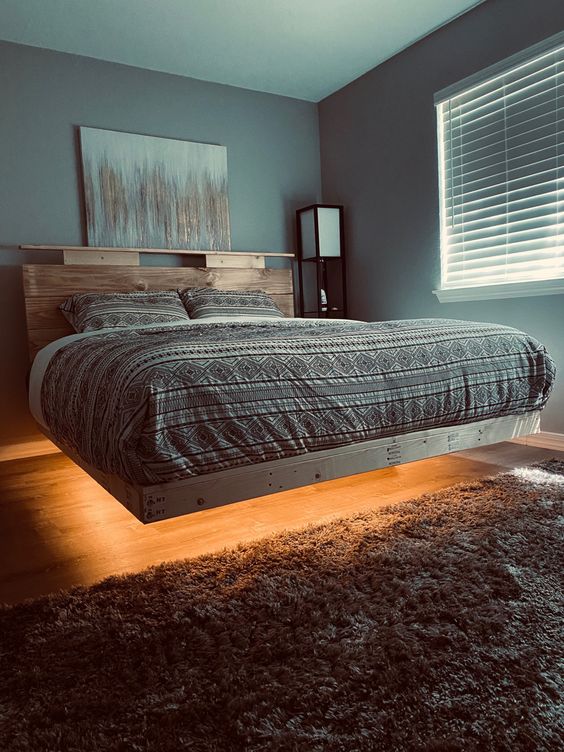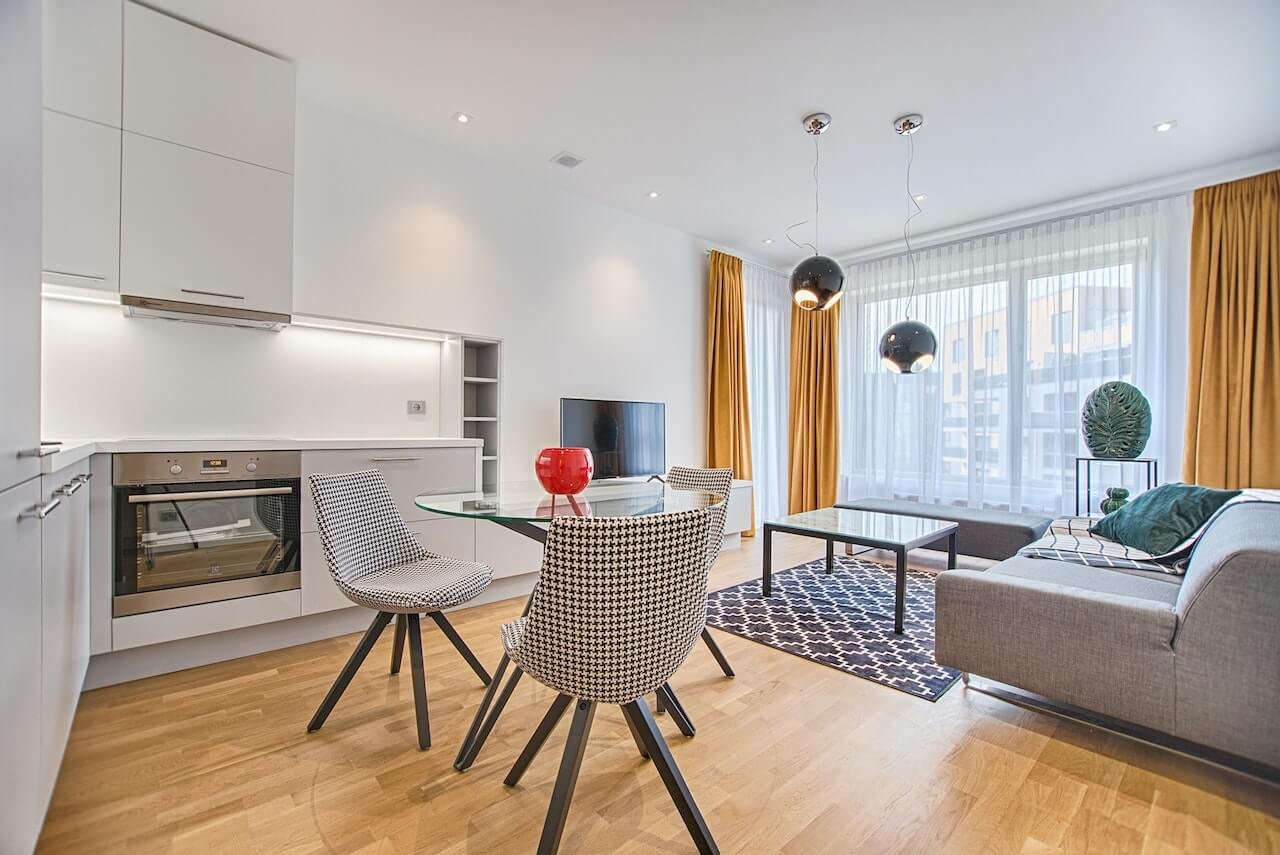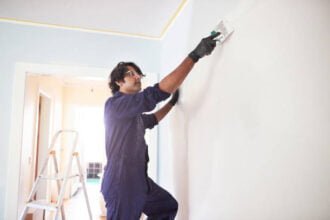Beds are generally the focal point of attractive bedrooms. The floating bed is a trendy modern bedroom design style. Floating beds range from simple and minimalist to sumptuous and exquisite.
Houzz found that 64% of homeowners want a clean, uncluttered bedroom, making floating beds a popular choice for minimalists and modernists. The survey also found that 36% of homeowners would spend more on their bedroom furnishings than any other area, demonstrating a preference for luxury and high-end designs.
This article will cover floating beds from minimalist to extravagant four-poster. We’ll analyze each type’s benefits and drawbacks. There is a floating bed design for any style and budget, from modern to exquisite.
Minimalist Floating Beds

Beds that don’t need to be attached to the wall are a sleek and contemporary option for any bedroom. Its minimal aesthetic and seemingly weightless appearance are their defining features. Among the most distinguishing characteristics of minimalist floating beds are the following:
Simple Designs
Floating beds with a minimalist aesthetic emphasize minimal ornamentation and streamlined forms. They often feature a concealed leg or wall mount design with a platform base. Most commonly, the bed frame is constructed from either wood, metal, or a hybrid of the two. Some have headboards, while others choose a headboard-less minimalist style.
Also See: Guide to Mudroom Bench: Organization, Decor, and Maintenance
Materials Used
Floating beds in the minimalist style are often made of metal or solid wood. The longevity and visual appeal of these materials were major considerations in their selection. The extra padding and upholstery on some mattresses is a nice touch.
Pros & Cons
Pros
- Floating beds, which are minimalist in design, can update the aesthetic of a space.
- They make the area appear bigger although taking up less actual space.
- Because it is a floating bed, the space under it may be quickly and easily vacuumed.
- The minimalistic style makes them adaptable to a wide range of interior design preferences.
Cons
- Due to the higher quality materials utilized, minimalist floating beds might be more expensive than standard bed frames.
- Those who prefer a more traditional or decorative appearance may find the minimalist style unappealing.
- Some people may find them less comfortable due to the lack of a box spring or similar support structure.
- The floating design could lead to additional expenses for installation or wall mounting.
Rustic Floating Beds

Floating beds in a rustic design include a modern, floating structure that contrasts with the wood’s raw, weathered appearance. Some distinguishing characteristics of rustic floating beds include the following:
Distressed and Natural Finishes
Distressed and natural finishes give rustic floating beds a timeworn, vintage appearance that is a hallmark of the style. The colours and textures of the finishes are versatile. Beds can come in a variety of materials and styles, from weathered wood to metal details.
Wood and Metal Materials
Quality wood and metal are common building components for rustic floating beds. Depending on the final product’s purpose and aesthetic goals, either new or previously owned wood may be employed. Some beds might even have wrought-iron or black steel accents to up the industrial chic factor.
Pros & Cons
Pros
- Floating beds with a rustic design lend a special touch to any space.
- They make the area appear bigger although taking up less actual space.
- Because it is a floating bed, the space under it may be quickly and easily vacuumed.
- They are usually made from sturdy materials that can sustain regular use without showing signs of wear and tear.
Cons
- Depending on the quality of the materials used, a rustic floating bed may cost more than a standard bed frame.
- Someone looking for a sleek, contemporary style could be put off by the distressed and natural finishes.
- Some people may find them less comfortable due to the lack of a box spring or similar support structure.
- The floating design could lead to additional expenses for installation or wall mounting.
Modern Floating Beds

The floating mattresses of today are the epitome of minimalist design and chic, giving the impression that they float effortlessly above the ground. Following are a few of the most notable characteristics of contemporary floating beds:
Sleek and Clean Lines
These days’ floating beds are sleek and modern, with a simple design that emphasizes minimalism and space efficiency. Platform bases with concealed legs or wall mounts are a common design element. Even if a headboard is included in the bed’s frame, it is typically rather plain and unassuming.
High-end Materials
High-end materials like solid wood, metal, or a combination of the two are commonly used in the construction of today’s floating beds. We carefully select the materials we use for both their practicality and their aesthetic value. The use of upholstery or padding into some designs is also a possibility.
Pros & Cons
Pros
- These days, you can find floating beds in all sorts of stylish designs that can make any room feel more opulent.
- They make the area appear bigger although taking up less actual space.
- Because it is a floating bed, the space under it may be quickly and easily vacuumed.
- They are usually made from sturdy materials that can sustain regular use without showing signs of wear and tear.
Cons
- Because of the high-quality materials utilized, modern floating beds can be more expensive than conventional bed frames.
- Those who prefer a more traditional or decorative appearance may find the minimalist style unappealing.
- Some people may find them less comfortable due to the lack of a box spring or similar support structure.
- The floating design could lead to additional expenses for installation or wall mounting.
Canopy Floating Beds
Modern floating beds with a canopy have the look and feel of a four-poster bed without the hassle of actual posts. Some distinguishing characteristics of canopied, floating beds are as follows:
Four-Poster Designs
Like a conventional four-poster bed, canopies on floating beds have a platform base held up by four posts. The posts, which can be constructed of wood, metal, or a combination of the two, normally protrude from the bed’s four corners. This produces a sophisticated and refined appearance, ideal for those who appreciate conventional or retro fashion.
Sheer Curtains
Canopy beds, also known as hanging beds, are characterized by the presence of drapes or curtains that hang from the ceiling above the mattress. Curtains can be drawn for seclusion or kept open for a lovely, romantic ambiance. Also, they’re easily interchangeable, so you can give your space a fresh look every season.
Pros & Cons
Pros
- Floating beds with canopies are a timeless design option that can give any bedroom a dash of opulence and sophistication.
- The soft, gauzy drapes can be drawn for seclusion or to set a soothing mood.
- They make the area appear bigger although taking up less actual space.
- Because it is a floating bed, the space under it may be quickly and easily vacuumed.
Cons
- The high grade materials utilized in canopy floating beds might make them more expensive than standard bed frames.
- More care, including washing and ironing, may be needed for the drapes.
- For a more basic or contemporary aesthetic, the sheer curtains may not be the best choice.
- The floating design could lead to additional expenses for installation or wall mounting.
Platform Floating Beds

Modern floating beds, like the platform kind, are typically quite simple in appearance and have a low profile. Some distinguishing characteristics of floating platform beds include the following:
Low to the Ground
Beds that float on a platform are often designed to be quite low to the ground, creating a very contemporary aesthetic. They’re built on platforms that look like they’re floating in the air thanks to secret legs or wall mounts. Because of their compact form, they are sometimes preferred over bulkier alternatives in cramped quarters or rooms with low ceilings.
Different Materials
The frames of these beds might be made of wood, metal, or a hybrid of the two. The use of upholstery or padding into some designs is also a possibility. The materials are selected for their longevity and attractiveness, and they can be altered to suit a wide range of tastes.
Pros & Cons
Pros
- Floating beds on a platform are a contemporary option that may elevate the style of any bedroom.
- They make the area appear bigger although taking up less actual space.
- Because of its compact shape, this style is a good fit for cramped quarters or areas with low ceilings.
- They are usually made from sturdy materials that can sustain regular use without showing signs of wear and tear.
Cons
- High-quality materials utilized in making platform floating beds might drive up their prices compared to more common bed frames.
- Those who prefer a more traditional or decorative appearance may find the minimalist style unappealing.
- Some people may find them less comfortable due to the lack of a box spring or similar support structure.
- The low-profile design may necessitate additional installation or wall mounting, which could raise the price.
Round Floating Beds
Beds with a low platform foundation that gives the illusion of floating are a popular contemporary design. Some distinguishing characteristics of floating platform beds include the following:
Low to the Ground
When compared to a conventional bed frame, the platform base of a floating bed is often much lower to the floor. This makes for a clean and contemporary appearance, ideal for individuals who want understated decor. Anyone with mobility challenges will like the bed’s low profile, which makes getting in and out of bed a breeze.
Different Materials
Floating platforms can be crafted from wood, metal, leather, or a mix of these elements. Both practicality and aesthetics play a role in the selection of the materials. Cushioning or upholstery may be included in some forms for the sake of convenience or luxury.
Pros & Cons
Pros
- Floating platform beds are a stylish option for those looking to update their bedroom with a contemporary design.
- They make the area appear bigger although taking up less actual space.
- The reduced height makes it less of a struggle to get in and out of bed, which is especially helpful for people with mobility concerns.
- They are usually made from sturdy materials that can sustain regular use without showing signs of wear and tear.
Cons
- High-quality materials utilised in making platform floating beds might drive up their prices compared to more common bed frames.
- Some people may find the low profile to be uncomfortable.
- Some people may find them less comfortable due to the lack of a box spring or similar support structure.
- The floating design could lead to additional expenses for installation or wall mounting.








